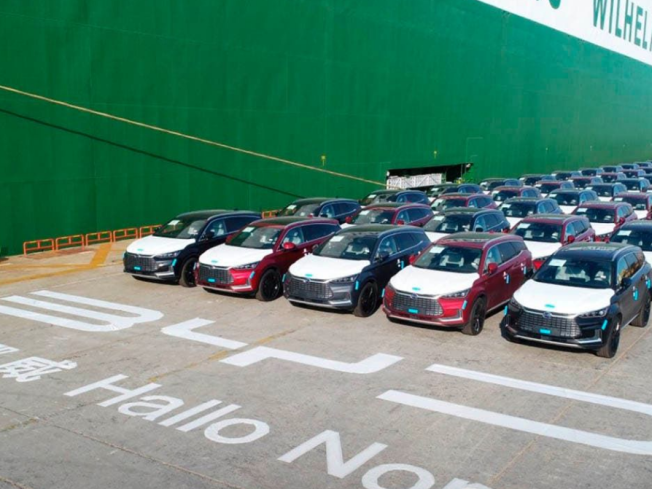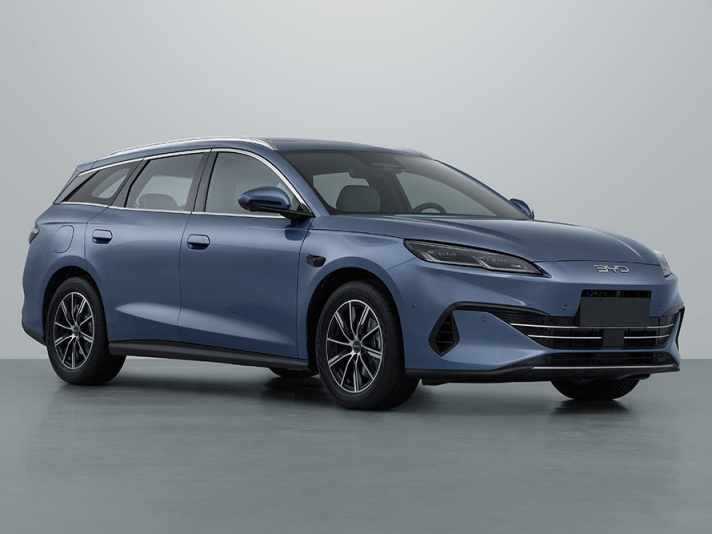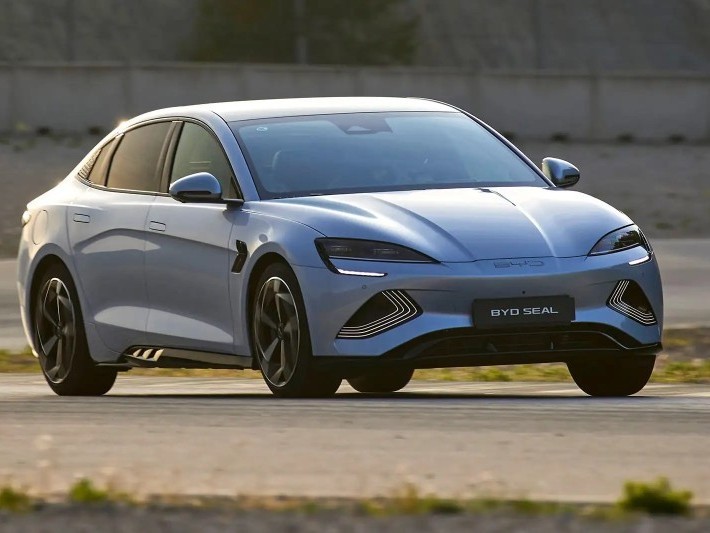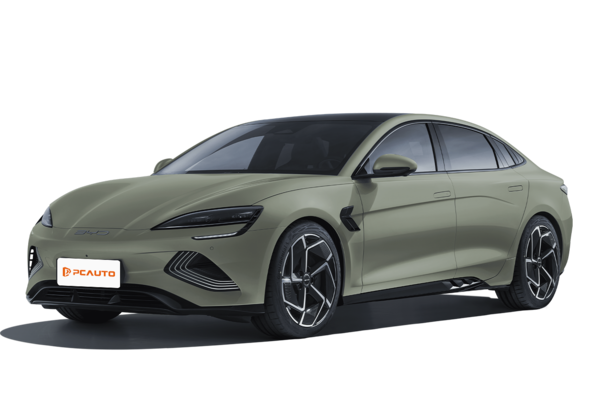Q
how much byd seal
The BYD Seal's pricing in Malaysia varies depending on the trim level, with current prices ranging from approximately RM179,800 to RM199,800. Exact figures might fluctuate slightly due to promotional offers or optional extras. As a fully electric sedan from BYD, the Seal stands out with its e-Platform 3.0 technology and CTB (Cell to Body) integrated battery design. The long-range variant boasts an impressive NEDC range of up to 520 kilometers, and it supports fast charging, going from 30% to 80% battery in around 30 minutes.
Malaysian buyers can take advantage of government incentives for electric vehicles, including import and sales tax exemptions. Additionally, road tax is waived in some states, further reducing the overall cost of ownership. The Seal comes well-equipped with a 12.3-inch all-digital instrument cluster and a 15.6-inch rotating infotainment touchscreen. It also features the DiPilot intelligent driving assistance system, making it competitive in terms of both safety and technological features.
For Malaysian consumers considering an EV, beyond the purchase price, charging infrastructure is a key consideration. Malaysia's public charging network is expanding rapidly, particularly in major urban centers. BYD has also partnered with local firm CharEV to establish dedicated charging stations for its customers.
While competitors like the Tesla Model 3 occupy a similar price bracket, the BYD Seal carves out a niche with its superior interior space and attractive warranty package, which includes an 8-year battery warranty on selected models.
Special Disclaimer: This content is published by users and does not represent the views or position of PCauto.
Related Q&A
Q
What Segment Does BYD Seal Belong to?
The BYD Seal belongs to the D-segment cars. D-segment cars are typically mid to large-sized vehicles, well-known for striking a balance between space, comfort, and performance.
The BYD Seal has a body length of 4,800 millimeters, a width of 1,875 millimeters, and a wheelbase of 2,920 millimeters, offering passengers a relatively spacious interior. The trunk space is also quite decent. Such specification makes it suitable for comfortable long - distance trips and can meet the sufficient space requirements for daily use. Moreover, in terms of performance, the Seal provides different versions with various power outputs. It can provide a smooth daily driving experience and also offer a more exciting high - performance driving feel. Whether for family users or individual users who desire more space and better performance in their vehicles, the D - segment BYD Seal is an appealing choice.
Q
What's the Reslae Value of BYD Seal?
The BYD Seal, a relatively new electric vehicle in the Malaysian market, currently lacks complete data on its resale value, but general resale value for EVs can provide some references. Due to rapid advancements in EV technology, the resale value of electric vehicles typically declines slightly faster than that of comparable internal combustion engine (ICE) vehicles in the first three years—around 50%-60% for EVs versus 60%-70% for ICE cars.
Key factors influencing resale value include battery health (BYD offers an 8-year/160,000 km battery warranty), growing brand recognition (BYD has shown strong performance in recent years), and the maturity of EV infrastructure (such as charging network development). Compared to similar ICE vehicles, the BYD Seal's extended battery warranty and lower operating costs (electricity being significantly cheaper than fuel) may help mitigate depreciation.
For prospective buyers, it is advisable to consider certified pre-owned programs and maintain complete service records to preserve resale value. As EV adoption increases, more definitive resale value data will be provided.
Q
What's the Displacement of BYD Seal?
The BYD Seal is an electric vehicle, so it doesn't use the traditional "CC" (cubic centimeters, used to measure internal combustion engine displacement) as a metric. It provides different versions, such as the Dynamic EV, Premium (Extended Range), and Performance AWD. In terms of the powertrain, the Dynamic EV version has a total motor power of 150kW, a maximum horsepower of 204PS, and a total torque of 310N·m. The Premium (Extended Range) version has a total motor power of 230kW, a maximum horsepower of 308PS, and a torque of 360N·m. The Performance AWD version is more powerful, with a combined system power of 390kW, a combined horsepower of 523PS, and a combined torque of 670N·m. These motors can provide efficient and strong power output, meeting different consumers' needs for speed, range, etc. Moreover, the all - electric drive also complies with the current trend of environmental protection and energy conservation.
Q
What's the PCD Size of BYD Seal?
The PCD (Pitch Circle Diameter) of the BYD Seal is 5×114.3, which means the wheel hub has 5 bolt holes evenly distributed on a circle with a diameter of 114.3 millimeters, matching the standard used by many mainstream Japanese vehicles (such as Honda and Toyota). So, it's easy to find compatible wheel hub options for modification or replacement in the Malaysian market.
Beyond PCD, wheel modifications also require attention to other parameters, including the hub bore (recommended to use OEM-concentric hub rings for precise fitting), offset (ET value), and wheel width to avoid affecting suspension geometry or causing friction. For wheel upgrades, it is advisable to choose EV-rated products that can accommodate the Seal's battery weight and prioritize purchasing through BYD-certified channels to ensure safety and compatibility.
Q
Does BYD Seal Support Apple Carplay?
The BYD Seal doesn't have the Apple CarPlay feature. Apple CarPlay is a system developed by Apple Inc., which allows iPhone users to connect their devices to the in-vehicle infotainment system. Although some car models in the market support this feature, the BYD Seal isn't one of them.
However, the BYD Seal has its own advanced infotainment system. It's equipped with a 15.6 - inch intelligent rotating touchscreen, which can provide a wide range of entertainment and vehicle control functions. This car also adopts a comprehensive set of standard configurations, such as various safety systems, comfortable seats with multiple adjustment options, and a high - quality sound system with 12 Dynaudio speakers. Even though the Seal doesn't have Apple CarPlay, its own infotainment capabilities can still bring users a convenient and pleasant driving experience.
Q
What's the Brand of BYD Seal's Tire?
The original tires of the BYD Seal are usually high-performance tires from Michelin or Continental. The specific tire models might be Pilot Sport EV or EcoContact 6, which are optimized for electric vehicles to match its powerful performance and noise reduction requirements. These tires are characterized by a low rolling resistance to improve the vehicle's range, the reinforced structures to handle the additional weight of EVs, and noise-reducing tread patterns to minimize road noise.
If you need to replace the tires, it is recommended to choose EV - specific tires of the same specifications. Pay attention to the size markings such as 235/45 R19 or 245/40 R20 (depending on the specific vehicle configuration), and also consider the wet - surface grip and wear - resistance index. When purchasing, you can go through BYD's official services or authorized tire dealers to ensure you get products that are suitable for the characteristics of electric vehicles.
Q
Is BYD Seal a Good Choice? Learn the Pros and Cons Here
The BYD Seal is a truly outstanding electric sedan that boasts high competitiveness in the Malaysian market. It's equipped with BYD's advanced e-Platform 3.0 technology and efficient Blade Batteries, offering excellent range performance (up to approximately 570 kilometers under the WLTP standard) and fast charging capabilities, which perfectly meet the local long - distance driving needs.
This car stands out with its remarkable power performance. The dual - motor all - wheel drive version can accelerate from 0 to 100 km/h in just 3.8 seconds. The driving experience is comparable to that of high - performance fuel - powered vehicles. Meanwhile, the electric system provides a smooth and quiet ride.
The interior uses high - quality materials and has luxury features such as a 15.6 - inch rotating central control screen and a Dynaudio sound system. It's also equipped with BYD's DiPilot intelligent driving assistance system to enhance driving safety.
As a pure - electric vehicle, it outperforms traditional fuel - powered cars in terms of maintenance costs, environmental - friendliness, and technology equipment. Although the price is not low, compared with other vehicles in the same class (like the Tesla Model 3), it has advantages in terms of cost - effectiveness and local after - sales service. It's a great choice for Malaysian consumers who are looking for high performance and low vehicle - using costs.
Q
What's the Width of BYD Seal?
The width of all BYD Seal variants is uniformly 1875mm. Vehicle width refers to the horizontal distance between the outermost rigid fixed protrusions on both sides within the vehicle's longitudinal symmetrical plane. This width dimension not only influences the visual effect of the vehicle's exterior, giving it a more imposing and stable appearance, but also affects the interior space layout, indicating a relatively spacious lateral cabin area, providing a more comfortable riding experience for both drivers and passengers, particularly ensuring rear occupants do not feel overly cramped. Additionally, during driving, the width contributes to stability to a certain extent, with an appropriate width helping to enhance the vehicle's stability during high-speed driving or cornering.
Q
What's the Road Tax of BYD Seal? How to Calculate It?
Currently, all electric vehicles registered in Malaysia are exempt from road tax, with the tax exemption period set to expire at the end of 2025. Starting from January 1, 2026, the road tax rates for electric vehicles will be calculated in tiers based on the vehicle's motor power:
The first tier applies to EVs with motor power below 100kW, where the tax increases by RM10 for every additional 10kW. The second tier applies to vehicles with 100kW to 210kW, where the tax increases by RM20 for every additional 10kW. The third tier covers EVs with power between 210kW (exclusive) and 310kW, where the tax increases by RM30 for every additional 10kW.
Taking the BYD Seal models as an example:
The 2024 BYD Seal Dynamic EV, with a total motor power of 150kW, falls under the second tier. Since it exceeds 100kW by 50kW, the road tax is calculated at RM20 per 10kW, resulting in RM100.
The 2024 BYD Seal Premium (Extended Range), with a total motor power of 230kW, falls under the third tier. Exceeding 210kW by 20kW, the road tax amounts to RM60.
The 2024 BYD Seal Performance AWD, with a total motor power of 390kW, also falls under the third tier. Exceeding 210kW by 180kW, the road tax is calculated at RM540.
Q
What‘s the Oil Capacity of BYD Seal's Engine?
The BYD Seal is an electric vehicle (EV), so it doesn't require engine oil but is powered by electric motors.
The three variants of the BYD Seal, namely the 2024 BYD Seal Dynamic EV, 2024 BYD Seal Premium (Extended Range), and 2024 BYD Seal Performance AWD, all run on electricity. They adopt battery systems like the BYD Blade Battery or Lithium iron phosphate battery for energy storage, and electric drivetrains.
For EVs, maintenance focuses more on battery health, charging system checks, and the condition of electric components rather than engine oil changes, making them more environmentally friendly and often require less frequent maintenance compared with traditional gasoline or diesel-powered cars.
Latest Q&A
Q
How big is the gas tank on a GR Corolla 2025?
The 2025 Toyota GR Corolla comes with a 50 - liter fuel tank. This high - performance hatchback is equipped with a 1.6 - liter three - cylinder turbocharged engine and paired with a full - time all - wheel drive system. While offering an excellent driving experience, the 50 - liter fuel tank capacity can also meet the needs of daily commuting and weekend getaways. For Malaysian consumers, the fuel tank design of the GR Corolla strikes a great balance between performance and practicality. Considering the common local driving conditions and the distribution of gas stations, this capacity can support a cruising range of approximately 400 - 500 kilometers (it specifically depends on driving habits and road conditions).
It's worth mentioning that as a model focused on the driving experience, the fuel tank position of the GR Corolla is specially designed to optimize the vehicle's weight distribution, which is also a common practice of Toyota's Gazoo Racing department when developing high - performance models. The hot and rainy climate in Malaysia places higher requirements on the fuel tank material. The GR Corolla uses anti - corrosion coatings and enhanced sealing designs to ensure safe and reliable operation in various environments. If you often drive long distances, it is recommended to regularly check the fuel tank and the oil circuit system, which is especially important in high - temperature and high - humidity environments.
Q
What kind of oil does a 2025 GR Corolla take?
As a high-performance vehicle, the 2025 GR Corolla is recommended to use fully synthetic oil that meets Toyota's original factory standards. The viscosity is typically 0W - 20 or 5W - 30. Specifically, refer to the owner's manual or the advice of local Toyota dealers in Malaysia, as the tropical climate may affect the oil selection. High-performance turbocharged engines have relatively high requirements for oil. Fully synthetic oil can provide better high-temperature protection and anti-wear performance. It is recommended to change the oil every 5,000 to 8,000 kilometers or every 6 months (whichever comes first). Owners in Malaysia need to pay attention to choosing oil with API SP or ILSAC GF - 6A certification. This type of oil is designed for modern engines and can effectively prevent low-speed pre-ignition problems. If you frequently drive aggressively or participate in track days, you can consider using higher-performance racing oil, but for daily use, the specifications recommended by the factory are sufficient. Regular oil changes are crucial for maintaining the performance of the GR Corolla's G16E - GTS 1.6T three-cylinder engine. Meanwhile, it is recommended to use the original factory oil filter to ensure the filtering effect.
Q
What is the difference between a 2025 and 2024 Corolla?
The main differences between the 2025 and 2024 Corolla models are concentrated on the optimization of technological features and the powertrain. The 2025 Corolla is expected to upgrade the Toyota Safety Sense intelligent driving safety system to version 3.0, adding more precise pre - collision warnings and full - speed range radar cruise control. It may also come with a larger center - console touchscreen and support wireless Apple CarPlay/Android Auto, while the 2024 model uses the 2.5 - version system and requires a wired connection.
In terms of power, the 2025 model might slightly improve the overall output efficiency of the 1.8L hybrid system, but it will keep the same 1.8L naturally - aspirated and 1.6L turbo options as the 2024 model. There are minor differences in appearance. The 2025 model may adjust the front grille design and wheel styles.
Malaysian customers should note that the locally - introduced versions may have their configurations adjusted according to market strategies. For example, Southeast Asian specifications often enhance the air - conditioning system and anti - rust treatment for the tropical climate.
As a globally best - selling model, the Corolla's annual iterations are usually based on steady improvements. If you have a limited budget and don't need the latest technology, the 2024 model still offers high cost - effectiveness. Consumers who pursue cutting - edge features can wait for the 2025 model to hit the market and then compare the actual differences between the two models.
Q
Why is the GR Corolla 2025 so special?
The 2025 GR Corolla is special because it inherits Toyota's high - performance genes from Gazoo Racing. It's equipped with a 1.6T three - cylinder turbocharged engine that can churn out over 300 horsepower. And it comes with the GR - Four all - wheel - drive system, which provides flexible power distribution, offering an exhilarating driving experience. It's especially suitable for Malaysia's winding mountain roads and race tracks.
This car also features a lightweight body and a sport - tuned suspension, ensuring precise handling. The limited - edition Morizo Edition further enhances its exclusivity. For Malaysian car enthusiasts, the GR Corolla is not just a high - performance hot hatch; it represents Toyota's commitment to pure driving pleasure. Its arrival allows those with limited budgets to experience the thrill similar to that of a rally car.
Moreover, it has great potential for modification. Given the strong local car - modifying culture, there's plenty of room for future upgrades. Whether it's for daily commuting or track days, the GR Corolla can handle it all. It's an ideal choice that combines practicality and performance.
Q
What is the top speed of the 2025 Toyota Corolla GR?
In 2025, the top speed of the Toyota Corolla GR is expected to reach approximately 225 to 235 kilometers per hour. The specific figures may vary due to different market tuning or configurations. This performance - oriented model is equipped with a 1.6 - liter three - cylinder turbocharged engine with a maximum power of about 300 horsepower. It also comes with the GR - Four all - wheel drive system and a 6 - speed manual or 8 - speed automatic transmission, offering drivers a precise handling experience.
For car enthusiasts in Malaysia, the Corolla GR not only inherits the practicality of the regular Corolla but also shows excellent dynamic performance on local winding roads or high - speed sections through its strengthened chassis, sporty suspension, and exclusive aerodynamic kits.
It's worth noting that high - performance hatchbacks need attention on heat dissipation and tire selection in hot climates. Regular maintenance is recommended to ensure the engine and cooling system are in optimal condition. Meanwhile, Malaysian owners can refer to the adaptation tuning suggestions provided by UMW Toyota. Usually, these models require higher - grade fuel to unleash their full potential.
View MoreRelated News

2025 BYD Seal Coming to Malaysia with DiSus-C Adaptive Suspension
JohnAug 13, 2025

BYD Seal interior design revealed: A fusion of modern technology and luxury
RobertJul 15, 2025

BYD Exports 214K Vehicles in Q1, Top Sales in 7 Markets
RobertApr 30, 2025

Photos of the BYD Seal 06 Touring Edition Reveal the Brand's Entry into a New Niche Market
JamesMar 24, 2025

BYD Wins Japan's Annual EV Award Again with Seal
MichaelMar 6, 2025
View More


















Pros
Cons